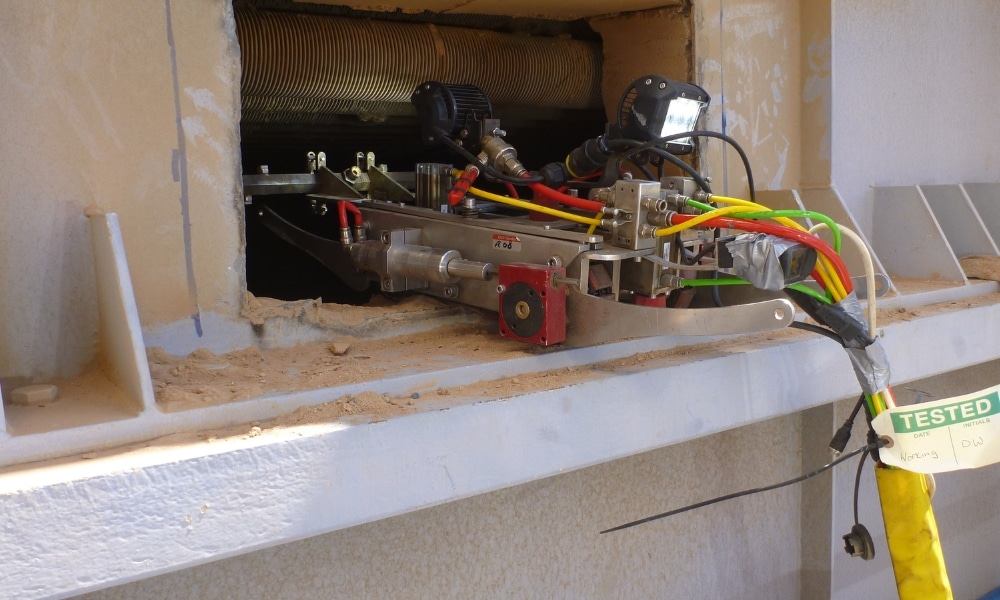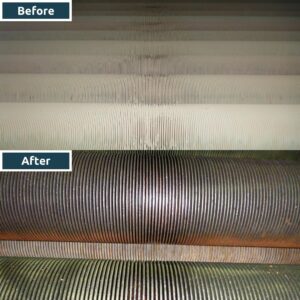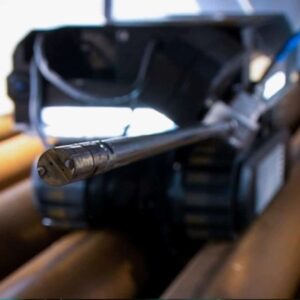Improving Performance of a Refinery’s Hydrogen Generation Unit
An Egyptian oil refinery, in operation since 1999, has faced challenges with Hydrogen Generation Unit fouling (HGU) since 2005. Issues such as hot spots on catalyst tubes, ageing reformer tubes and outlet system, and reduced hydrogen demand have led to the unit operating at a reduced capacity. To address these bottlenecks and evaluate the unit’s current status, a comprehensive assessment and debottleneck study were conducted by the OEM.
Key Study Findings
One significant finding of the study revealed the underperformance of the convection coils, which hindered the unit from achieving its desired efficiency. Over more than 20 years of operation, the convection coils, primarily consisting of finned tubes, suffered from increased fouling due to inadequate inspection and cleaning practices. The study recommended a potential solution of inspecting and robotically cleaning the external surface of the finned tubes to overcome this issue.

Project Overview
On the advice of the OEM, Integrated Global Services (IGS) was contracted to perform TubeTech™’s convection section performance recovery service at a hydrogen production unit at the refinery. The project involved increasing the size of six existing access doors in the convection section and the robotic de-fouling of convection coils.
The project commenced on March 29, 2023, and was successfully completed on April 3, 2023. The original planned scope of work, which included de-fouling and door installation, remained unchanged throughout the project.
Safety
Safety is a primary concern for IGS, and a robust safety program was implemented to ensure a safe working environment for all personnel involved. The company maintains a zero-incident safety philosophy and actively promotes a culture of safety among its employees. Daily toolbox talks, safety observations, unit walkdowns, and job safety audits were conducted to mitigate potential hazards and maintain safety standards throughout the project.
IGS has a strong safety track record, with a Total Recordable Incident Rate (TRIR) of 0.0 in 2022, well below industry average. The company adheres to OSHA best practices and local safety regulations to ensure compliance and maintain a safe work environment.
Quality
IGS follows stringent quality control standards to meet customer requirements. The project was executed in accordance with the IGS quality control standards, and a Quality Control Package (QCP) was agreed upon before the start of work.
Achieved Results
A performance test run was then conducted to evaluate the unit’s condition after the cleaning process. The unit’s capacity was successfully raised to 100% on April 16 and maintained for 24 hours. The test procedure for evaluating the unit’s performance after cleaning was based on the HPU’s latest probation test, ensuring consistency and comparability. Data from various sources, including DCS data, laboratory analysis results, outside field/local data, and electrical data, were collected during the test to accurately assess the unit’s performance.
Test Parameters
The performance test for the HGU was conducted from April 16 at 11:00 to April 17 at 11:00, lasting 24 hours. The main feedstock for the unit was natural gas, supplemented by a small portion of recycled hydrogen. The composition of the natural gas feed, as well as mass flow rates for different streams, was recorded. The laboratory analysis results showed changes in the feed composition and products during the probation test.
Unit Operating Parameters
Various operating parameters of the unit, such as temperatures, pressures, steam-to-carbon ratio, and steam drum pressure, were monitored during the probation test. The unit’s performance was compared to previous tests, revealing improved performance in terms of duty recovered by the convection section and a reduction in high stack temperature.
Probation Test Results
The evaluation of the probation test results indicated that the cleaning of the convection section had led to a 14% increase in duty recovered from flue gases compared to the previous test in December 2021. The reformer inlet temperature also increased from 437°C to 501°C, contributing to improved thermal efficiency. The lower stack temperature and increased efficiency resulted in cost savings of approximately $220,000 annually.
Conclusions
The successful cleaning of the convection section in the refinery’s HGU unit marked a significant step towards restoring the unit’s performance. The removal of fouling from the finned tubes facilitated enhanced heat absorption and a reduction in stack temperature, thereby improving overall thermal efficiency. This achievement represents a noteworthy milestone in the refinery’s ongoing expansion project and contributes to its long-term operational success.
IGS also provided technical recommendations for future maintenance and improvement, including the application of Cetek Refractory Coating to prevent refractory fouling. The conclusion of the project underscores the collaborative efforts between the Oil Refinery and IGS, as well as the positive working relationship among all team members.


Free consultation with an IGS Subject Matter Expert
IGS is here to provide information, answer questions and create an effective solution for your needs.
